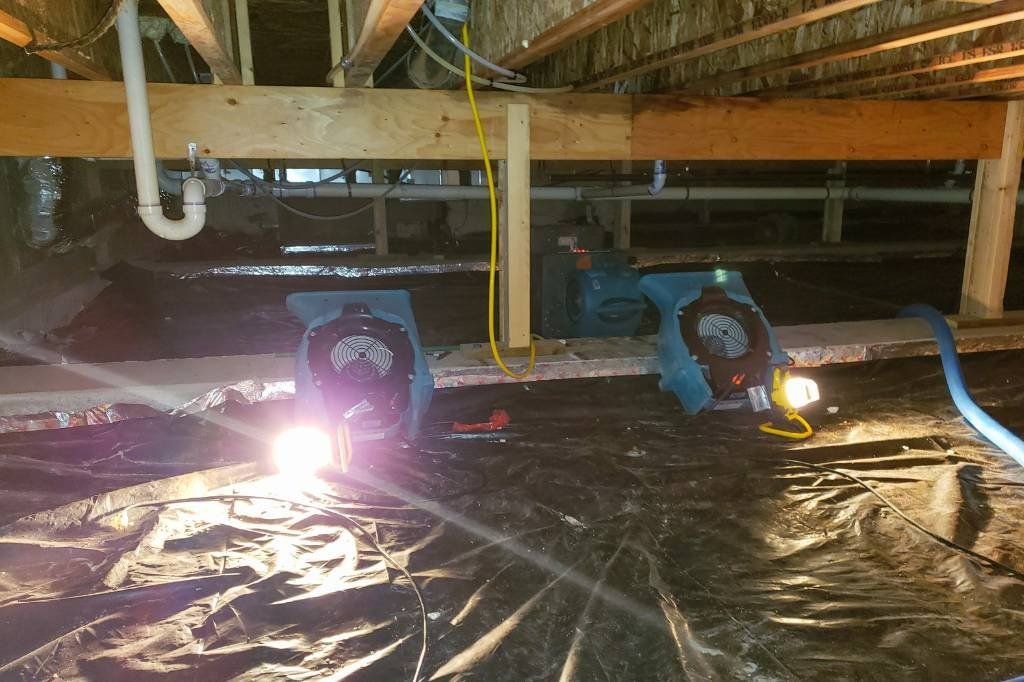There are several things to consider. One of the most important things is how the weather in Olympia can affect your attic and overall home. With heavy rainfalls, humid summers, and damp conditions prevalent during much of the year, mold can easily develop in unattended attics if not properly maintained. There are lots of methods for removing mold. We will also provide information on attic insulation olympia and how it can help prevent mold growth in your home.
The Truth About Mold and Attics in Olympia
Mold can damage your home, causing health issues and structural damage. While mold can sometimes occur naturally in areas with high humidity, it's essential to prevent excessive mold growth that can cause problems. Some of the most common sources of moisture in attics are roof leaks, plumbing problems, or condensation buildup.
Preventing Mold Growth in Olympia Attics
Proper insulation and ventilation are the best way to prevent mold growth in your attic. Proper insulation helps to keep the temperature inside your attic more consistent, while ventilation helps to bring fresh air into the space and reduce humidity levels. Additionally, it's important to ensure roof leaks are fixed as soon as possible. Finally, if you find any mold in your attic, it's important to remove it professionally and eliminate the source of moisture.
The Danger of Environmental Factors: Is Mold Taking Over Your Home?
Mold is not something to be taken lightly. It can easily take over your living space and wreak havoc on your health and home. Moreover, mold is only sometimes visible or easily detected, making it even more dangerous. So if you suspect mold in your home, it's crucial to take action immediately. Whether it's calling in a professional or taking steps to prevent its growth, it's important to ensure that you and your family are safe from the harmful effects of mold. So don't let the danger of environmental factors take over your home. Instead, take action and protect what matters most.
What to Expect From an Attic Mold Repair And Its Cost
Regarding attic mold repair, the cost can vary depending on the extent of the problem. Generally, calling in a professional is best when you see signs of mold growth. Professionals will be able to assess the extent of the damage and offer recommendations for remediation. Professional attic mold removal usually requires cleaning, sealing, and replacing materials. This can cost anywhere from several hundred to a few thousand dollars, depending on the extent of the problem. It's important to note that attic mold repair isn't just meant to remove visible signs of mold; it also helps to prevent future problems by preventing moisture buildup and controlling humidity levels.
Fight Mold in the Attic: Easy Tips for a Quick Fix
Start by thoroughly cleaning your attic, paying special attention to any visible signs of mold. You can also inspect for telltale signs such as musty smells or water spots. If you find any mold, it's important to have it professionally removed as soon as possible.
Make sure your attic is properly insulated and ventilated. Insulation helps to keep the temperature in the attic more consistent, and ventilation helps to reduce humidity levels and prevent moisture buildup. You can also consider using a dehumidifier or air conditioner to reduce humidity levels further.
Ensure any leaks or plumbing issues in your attic are immediately fixed. This is especially important as moisture often leads to mold growth.
How to Get Rid of Attic Mold for Good
Once you have taken steps to prevent future mold growth, it's important to take action to get rid of any existing mold. The first step is to thoroughly clean the affected areas and remove any visible signs of mold. It's also important to use protective gear such as gloves and a mask when cleaning.
The next step is using a fungicide specifically formulated to remove attic mold. Again, follow the manufacturer's instructions for proper application and safety precautions - working with a professional is important if you need help applying a fungicide properly.
Finally, make sure any structural damage in your attic is repaired. This includes replacing decaying wood or drywall and sealing cracks or crevices. Additionally, you may need to replace the insulation in your attic if it has been damaged by mold.












